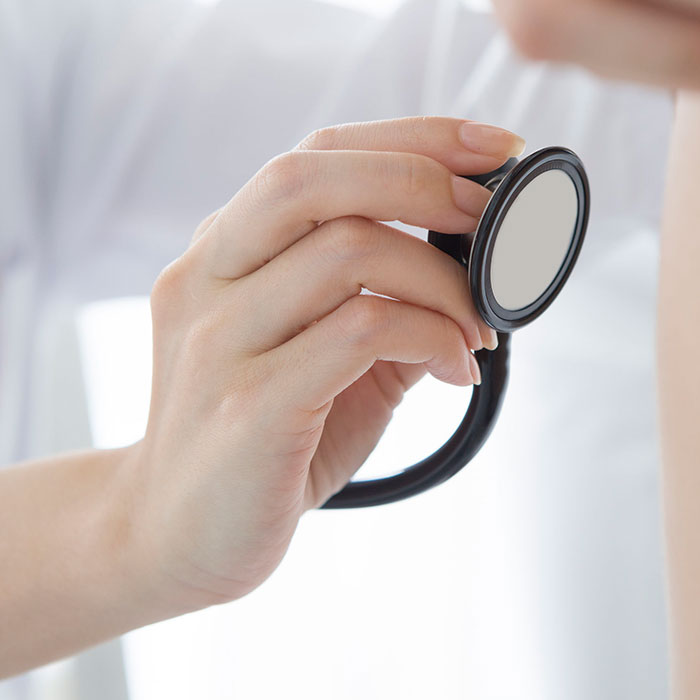Paediatric pulmonology
It can be extremely frightening for a parent if the child starts to suffocate or their breathing becomes wheezing. An experienced and kind doctor at our paediatric pulmonology clinic is waiting for the little patient to be diagnosed and treated with respiratory and lung diseases as soon as possible, making breathing easy again.
In all cases, consult a paediatric pulmonologist if the child’s cough does not stop or if wheezing or difficulty in breathing occurs. Breathing difficulty as a result of exercise and asthmatic symptoms also require a specialist examination.

What are the most common respiratory and lung diseases in childhood?
The following is a summary of the most common diseases with which our small patients come to our paediatric pulmonology clinic:
Asthma
The most common chronic childhood disease affects 8-10% of the child population. It is caused by chronic inflammation of the bronchi, which can be triggered in several ways. Without treatment, asthma causes permanent structural changes in the lungs that can cause significant respiratory impairment in adulthood. Shortness of breath, breathing difficulty, and rapid breathing may all be causes for an examination.
Respiratory allergy, hay fever
An increased, excessive reaction of the immune system to certain allergens may occur as early as childhood. Certain allergens work through the airways, causing inflammation of the nasal mucosa, but can also affect the entire bronchial system. It can be intermittent, caused by pollen from trees, grasses, weeds, or constantly present, such as house dust mites, animal hair, or mold-induced allergies.
Pneumonia
Its symptoms are often difficult to recognize clearly, as they are usually similar to the symptoms of cold. Therefore, if a strong, dry cough, chest pain, and high fever are associated with the rhinitis, it is recommended that you also see a pulmonologist with your child.
Upper respiratory tract infections
Or, as it is commonly called, rhinitis, is the most common inflammatory disease in childhood, meaning the inflammation of the airways above the larynx of infectious origin. It can be caused by a virus or a bacterium, in the former case symptomatic treatment is enough, but in the case of a bacterial infection, antibiotic therapy is also required. If symptoms persist or inflammation occurs frequently, it is also recommended to consult a pulmonologist.
Bronchitis
It is caused by inflammation of the mucous membranes of the bronchi. In acute form, it most often develops in association with viral upper respiratory disease. In addition to cold symptoms, dry cough and chest pain occur after 3-4 days. If acute bronchitis recurs frequently, it is recommended that the child be examined to determine the underlying cause.
Croup
It is a disease of infants and young children, as the cross section of their airways is even smaller and can be narrowed very quickly by mucosal swelling following the inflammation of the larynx. Typical seizures with a “barking” cough usually occur at night or early in the morning, without any precedent, causing no small alarm to parents.

What happens during a paediatric pulmonological examination?
During a paediatric pulmonology examination, the paediatric pulmonologist first establishes the medical history: the parent is questioned about the complaint, previous illnesses of the child and in the family, and birth conditions. The doctor then listens to the little patient’s lungs. In case of allergic complaints, they recommend a skin test to determine which allergen is causing the complaints. If you see a doctor for frequent suffocation, a breath function test (spirometry) can help find out the cause.
In addition, the specialist may recommend other imaging tests (CT, X-ray) as well as a laboratory test to make a diagnosis.
If the disease also affects the upper respiratory tract, the doctor might also recommend an otolaryngological examination.
What treatment options are available in a paediatric pulmonology clinic?
Once the diagnosis has been made, the doctor will recommend appropriate medication to eliminate or control the respiratory complaints. Based on the course of the disease, it is also possible to have check-ups to monitor the effectiveness of the therapy.
